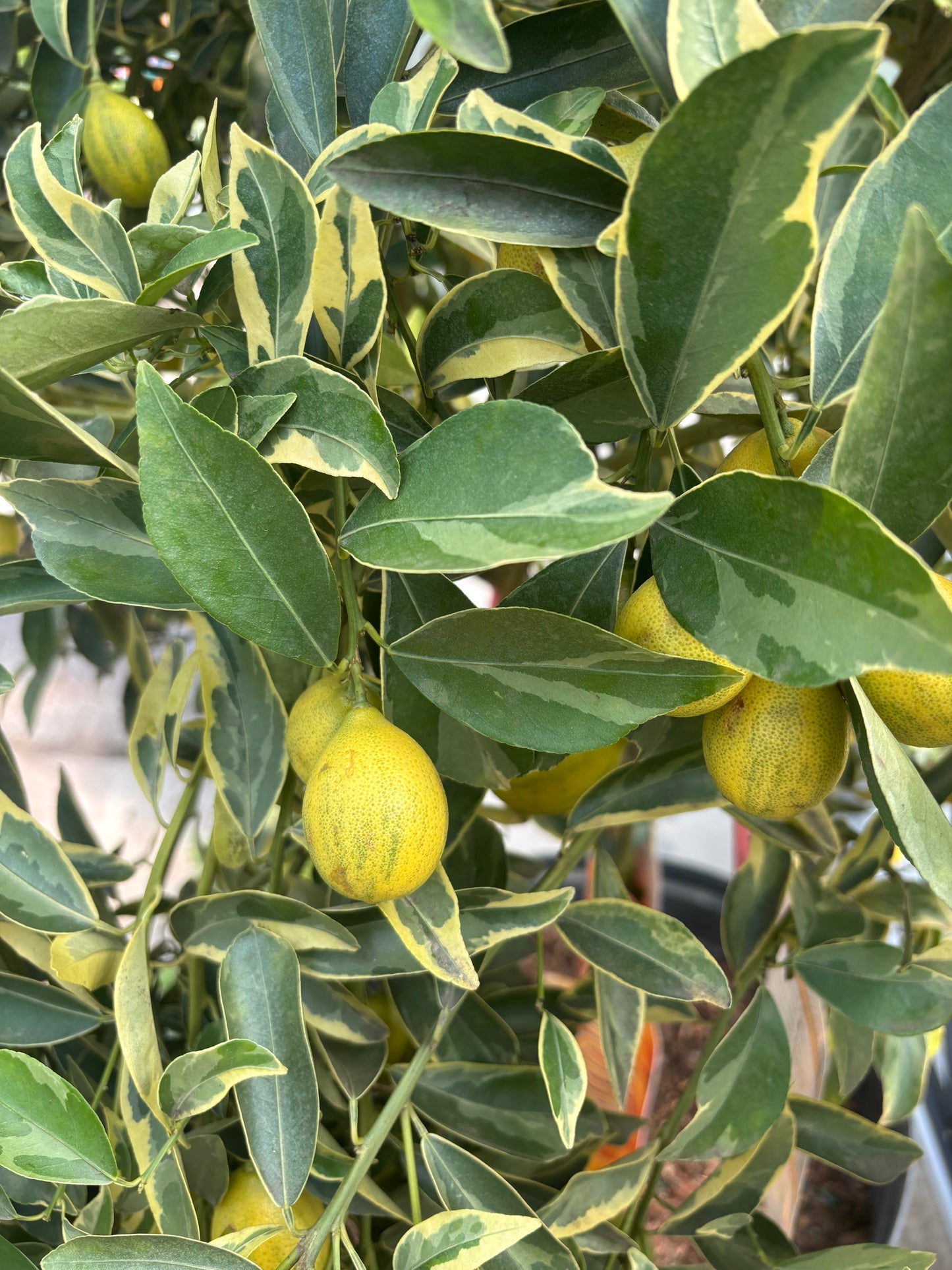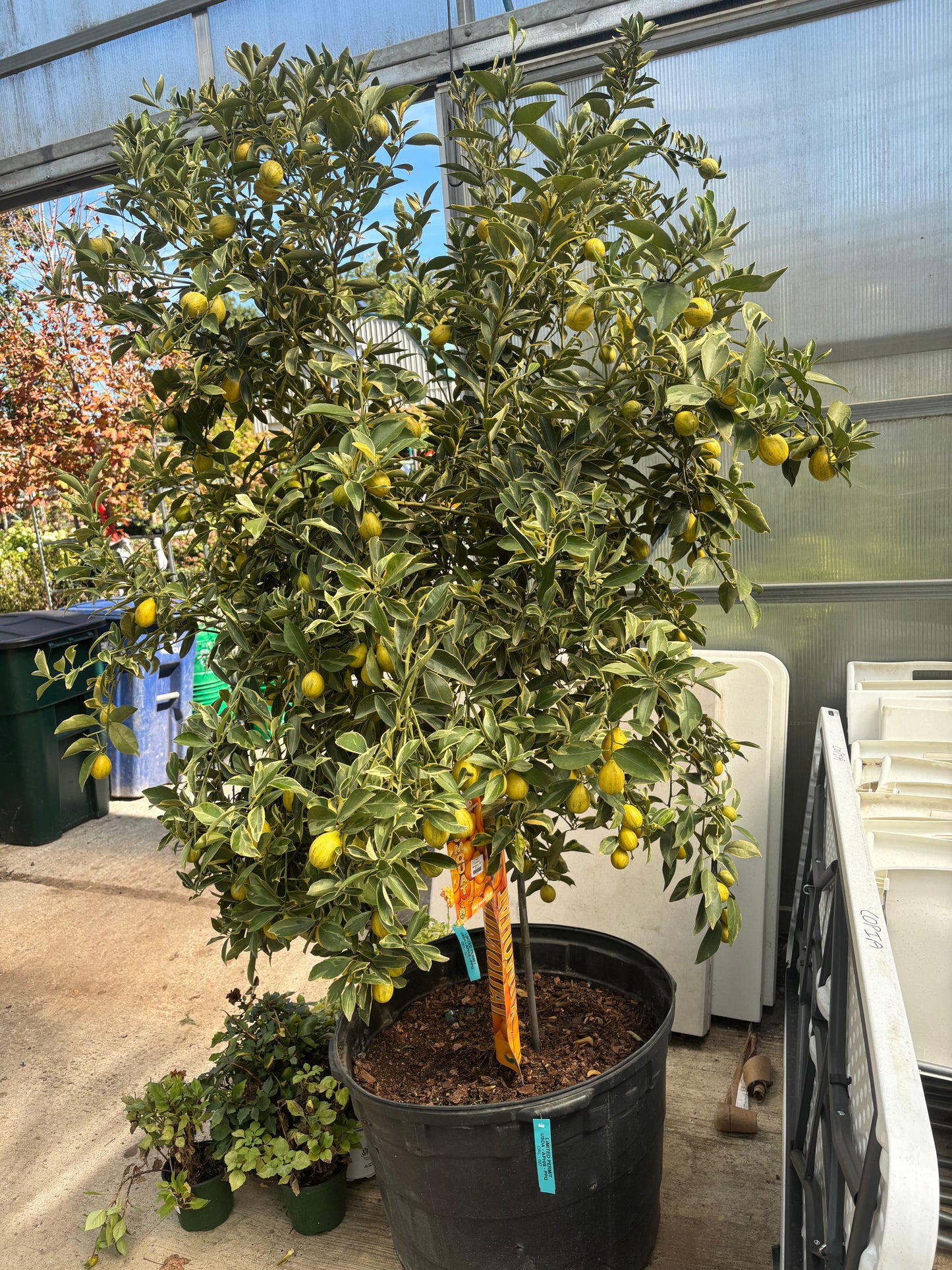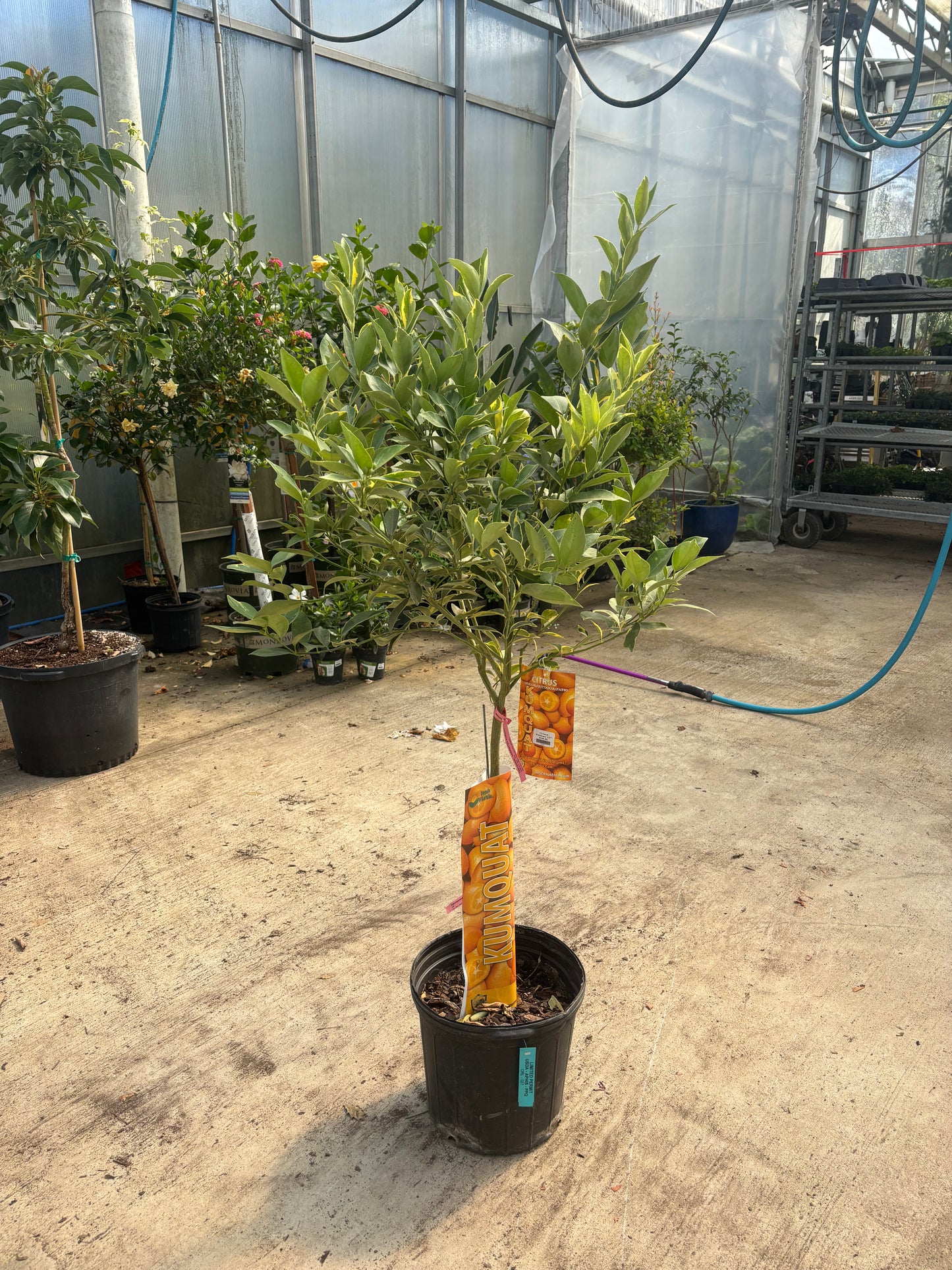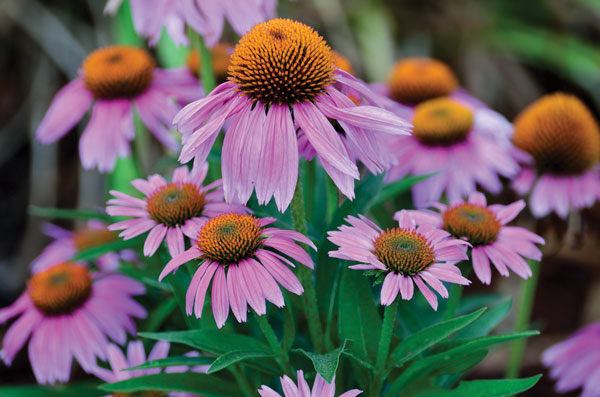Kumquat Citrus Tree
Kumquat Citrus Tree
Kumquat Citrus Tree
Couldn't load pickup availability
For gardeners in New England, kumquats must be grown in containers and brought indoors for the winter, as they cannot survive the region's cold climate. While kumquats are among the most cold-tolerant citrus, they are still only hardy to USDA Zones 8–11 and require indoor protection from frost.
Summer care (Outdoors)
Timing: Move your tree outdoors in the spring after the threat of frost has passed, usually when nighttime temperatures are consistently above 50°F.
Acclimatization: Acclimate the plant gradually over a week or two. Start with a few hours of indirect sunlight and slowly increase its exposure to direct sun to prevent leaf burn.
Sunlight:
Place the kumquat tree in a location where it receives at least 6–8 hours of direct sunlight per day.
Soil and Potting:
Use a well-draining citrus or cactus potting mix. Ensure the pot has ample drainage holes to prevent root rot. Use a large pot to give the roots plenty of room to grow and to prevent the plant from becoming root-bound.
Watering:
Water thoroughly whenever the top inch or two of soil becomes dry.
Fertilizing: Feed your tree with a citrus-specific fertilizer throughout the spring and summer, following the product's instructions. You can use a slow-release or liquid formula.
Winter care (Indoors)
Timing: Before the first hard frost, typically in the fall, bring the tree indoors.
Transition: Similar to the spring move, transition the plant indoors gradually to prevent shock.
Location:
Place the tree in the brightest possible spot, ideally near a south-facing window, to get maximum sunlight.
Supplemental Lighting:
Since New England winters have limited daylight, supplemental grow lights are often necessary. Position the light about 12 inches from the top of the tree for 10–12 hours daily.
Temperature:
Maintain indoor temperatures between 65–70°F during the day and 55–60°F at night.
Humidity:
Indoor heating can dry the air. Increase humidity with a humidifier, by misting the leaves, or by placing the pot on a tray of pebbles with water.
Watering and Fertilizing: Reduce watering frequency in the winter, allowing the soil to dry out more between waterings. Stop fertilizing during the dormant winter months and resume in the spring.
Share




Subscribe to our emails
Subscribe to our mailing list for insider news, product launches, and more.



